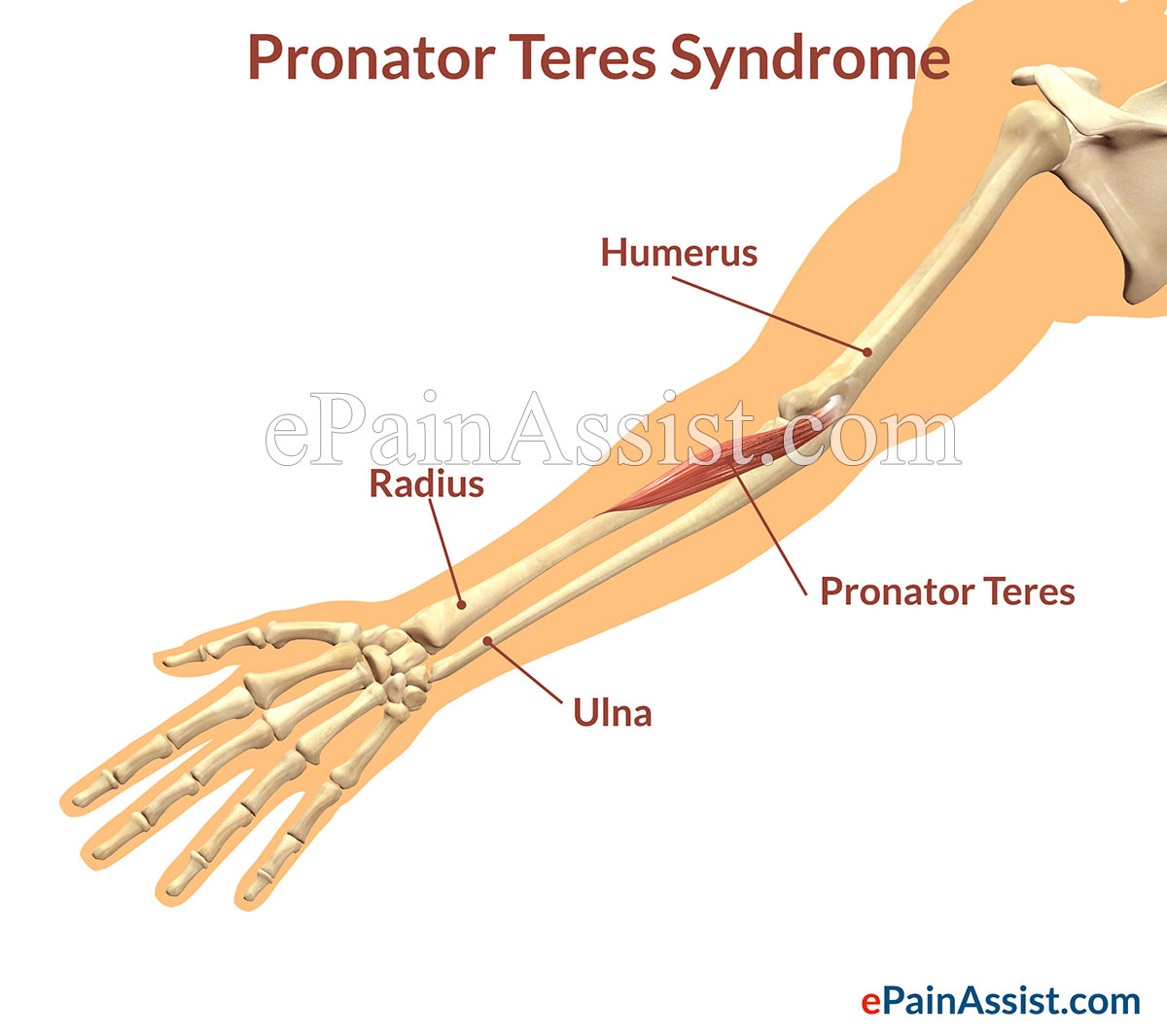What is Pronator Teres Syndrome (PTS)?
Pronator Teres Syndrome is a medical condition in which the median gets entrapped when it goes through between the two heads of pronator teres and results in development of symptoms. It is an entrapment neuropathy of the median nerve. The pronator teres is attached to the lower humerus and the inner ulna bone and median nerve gets compressed between these two heads and causes pain. The symptoms of PTS are similar to that of carpal tunnel syndrome. Therefore it is important to make a proper differential diagnosis. Patients with carpal tunnel syndrome will have no weakness or pain upon pronation of palm. The pronator teres is also not tender to touch. In CTS, there is absence of neural symptoms such as a numb or tingly feeling in the palms but is localized to the thumb and fingers only. Treatment comprises of rest, massages, PT, pain killers, corticosteroid injection and rarely surgery.

Symptoms of Pronator Teres Syndrome (PTS)
- Numbness or tingling is present in the palm, thumb, and first three fingers.
- Pain is felt in the forearm.
- Increased pain upon resisted pronation and wrist flexion.
- Tenderness upon touching the pronator teres.
- Decrease in strength in the thumb and first three fingers.
- Decrease in strength in forearm pronation and wrist flexion.
Causes of Pronator Teres Syndrome (PTS)
- Prolonged or repetitive pronation of the forearm i.e. turning the palm of the hand to face downwards.
- Forced flexion of the fingers and twisting movements at the wrist such as seen in manual occupations like carpentry and mechanics.
- Certain sports such as racket sports, rowing and weight lifting also cause this condition as the median nerve gets compressed due to increased muscle bulk of the pronator teres.
- Trauma or injury to the forearm also causes pronator teres syndrome.
- Bony abnormalities can cause compression of the medial nerve and result in pronator teres syndrome.
- Tumors can cause compression of the medial nerve and result in pronator teres syndrome.
- Restrictive bands of fibrous tissue and scar tissue can also cause compression on the median nerve and result in this condition.
- Females are more commonly affected by this condition than males.
Treatment of Pronator Teres Syndrome (PTS)
- Rest should be taken from aggravating activities.
- Ice application helps in decreasing the pain and swelling.
- Pain killers or anti-inflammatory medications such as ibuprofen and naproxen help in decreasing pain and swelling.
- Electrotherapy treatments such as ultrasound or laser can be done by a professional.
- Sports massage helps in reducing stiffness in the muscles.
- The pronator muscles can be gently stretched.
- Other alternative treatments such as acupuncture help in releasing the muscular tension.
- Patient should enroll in a physical therapy program.
- If symptoms persist, then nerve block or corticosteroid injection may be given.
- Surgical decompression may be required in rare cases.
